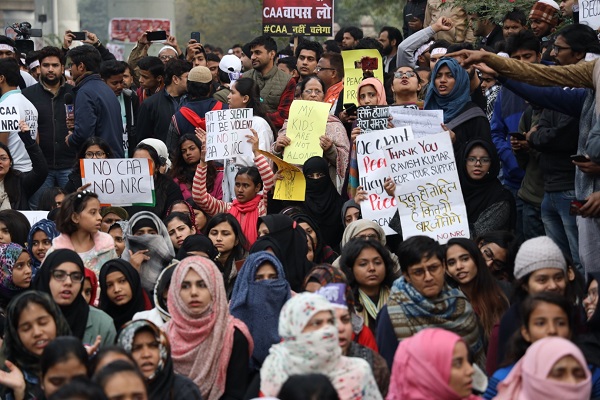
New Delhi, The anti-CAA protests in Jamia Millia Islamia entered the 15th day on Friday with students sitting on hunger strike and a few of them leaving to agitate at Uttar Pradesh Bhavan against the “police brutality in the state unleashed on the protesters”.
Scores of Jamia students and local residents including women continued to join the protest with young kids and toddlers. At the forefront are the women at the protest site. But the question remains — how did Jamia become the epicentre of the protests.
As IANS talked to many students and protesters to find out how the campus became a “leader” in the anti- Citizenship (Amendment) Act (CAA) protests, most of the students did not want to be quoted as many of them are civil services aspirants. They, however, said because of the police action on Sunday (December 15), Jamia became an epicentre of the protests, and as they received nationwide support, the protests became a “chain reaction” with people joining in from all over the country.
The first call of the protest was made by a few Jamia students and Jamia teachers association on December 13 as the university doesn’t have a students union. The protest was not allowed to cross the Sarai Julena Escort Crossing with police using “mild force” to disperse the crowd.
The next day was peaceful with sporadic protests, said a student who did not want to be named fearing police action.
The call for December 15 was given by the local residents and after it spilled over to the main roads, Jamia students joined in but the students insist that they did not cross the police barricade and the violence which took place had nothing to do with the students, but the police created havoc in the university campus. They beat the students who were mostly civil service aspirants and not part of the movement.
After the violence on Sunday, the next day people from Shaheen Bagh blocked the Noida-Faridabad road. And protests were seen across the university campus and in various parts of the country while the protests turned violent in UP.
More than 15 people have died in Uttar Pradesh, and two persons were killed in Mangaluru as anti-CAA protests continued in various parts of the country.
Mumbai saw the biggest and peaceful gathering as the protests persisted.
Prime Minister Narendra Modi and Home Minister Amit Shah have clarified on the issue of CAA but the protesters want a rollback of the CAA as well as the NPR.








